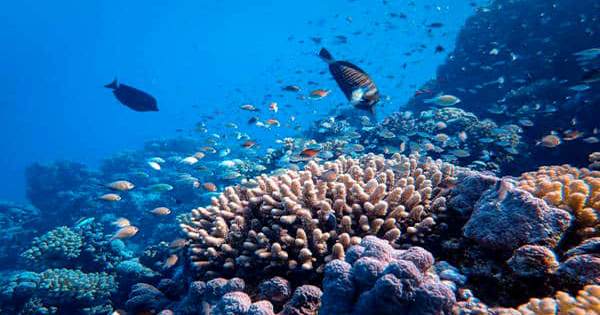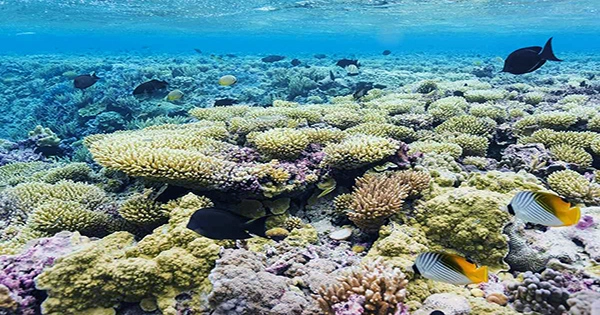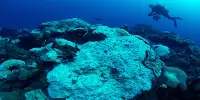Coral reefs can be important carbon dioxide sinks, which is just another incentive to protect them, according to researchers investigating the Red Sea.
Photosynthesis and calcification, two important chemical processes, are the sources of coral reef growth. While trees on land store carbon through photosynthesis, coral bodies store some of the carbon through calcification, which removes hydrogen carbonate from the water and releases the remaining carbon. Measurements show that coral reefs typically release a little bit more carbon dioxide than they absorb, but typically not by a significant enough amount to change the global carbon budget. A team researching some of the most peculiar coral reefs in the world demonstrated this has a crucial exception in three publications released last year.
Due to the Red Sea’s close proximity to deserts, it frequently experiences dust storms. The reefs in the Gulf of Aqaba/Eilat, an arm of the Red Sea, suffer a pulse of photosynthesis 24 hours after dust falls on them, according to research by Professor Hamish McGowan of the University of Queensland and co-authors. Over several days, this can draw vast amounts of carbon dioxide out of the water. Since this CO2 eventually replenishes from the atmosphere, the overall result is to remove millions of tonnes of carbon dioxide from the atmosphere, balancing a small country’s emissions. The reefs took twice as much carbon dioxide from the atmosphere than the nearby waters, even when smoothed out annually.

In a statement, McGowan stated that “this mechanism was previously believed to be impossible, but our research indicates otherwise.”
The growth pulses are the result of nutrients in the dust supercharging coral and their symbiotic photosynthesizing zooflagellates, McGowan told IFLScience. Another team investigating the issue also confirmed this. The poor nutritional density of the dust does not prevent this.
McGowan is interested in learning whether coral reefs on Australia’s northwest coast undergo similar dust-driven growth despite the fact that the majority of coral reefs do not have nearby deserts, much less surrounding ones. Furthermore, despite being distant from the Sahara, it is known that its dust fertilizes the Caribbean. Nobody is yet certain if the same is true of the reefs there. We can’t assess the significance of the phenomenon McGowan saw on the global climate budget until we know how widespread it is.
Runoff from floods that is nutrient-rich frequently destroys coral reefs. In these circumstances, there is a lot more content, according to McGowan, which is an example of having too much of a good thing. If someone is considering dust fertilization of reefs as a method of carbon sequestration, they should proceed with extreme caution.
The Red Sea’s coral reefs are recognized for withstanding temperatures that would cause other corals to bleach and perish. There has been talk of trying to save reef ecosystems by relocating these heat-adapted corals to other parts of the planet.
Runoff from floods that is nutrient-rich frequently destroys coral reefs. In these circumstances, there is a lot more content, according to McGowan, which is an example of having too much of a good thing. If someone is considering dust fertilization of reefs as a method of carbon sequestration, they should proceed with extreme caution.
The Red Sea’s coral reefs are recognized for withstanding temperatures that would cause other corals to bleach and perish. There has been talk of trying to save reef ecosystems by relocating these heat-adapted corals to other parts of the planet.
McGowan is intrigued by the idea that the dust might act as a cooling agent for the corals. McGowan and colleagues discovered another element throughout the course of their research, and it is unique to the location and contributes to the resilience of the reef there. “3 meters of evaporation [per year] caused by dry air blowing off the neighboring deserts must be supplied through the Straits of Tiran.” As a result, surface waters are cooled and corals don’t suffer temperatures as high as previously believed. The majority of other coral reefs are located in humid climates with substantially lesser evaporation.














